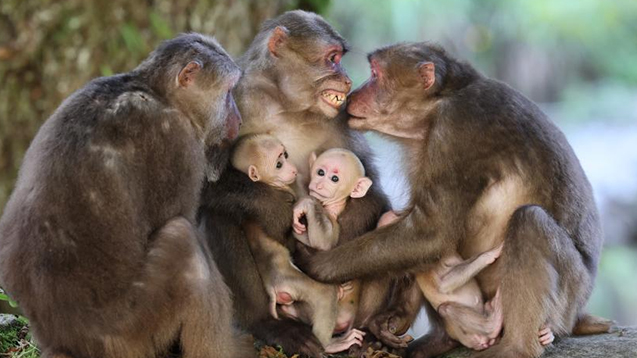A bloody history of U.S. forced labor, slavery
BEIJING, July 26 (Xinhua) -- The U.S. State Department recently released its annual report on human trafficking, in which it, as usual, criticized and pointed fingers at other countries while boasting the United States as one of the best-performing countries in eliminating human trafficking.
But a sequence of forced labor scandals within the United States tarnished its self-portrayed image and exposed its true colours as the epicenter of forced labor and slavery, with its more than 200 years of history dripping blood and tears.
AMERICA'S ORIGINAL SIN
"Slavery is America's original sin," U.S. Congresswoman Nikema Williams once said on Twitter.
In November last year, U.S. Justice Department released a case of modern slavery. Before being freed, more than 100 foreign nationals smuggled from Central American countries into the United States were forced to dig onions with their bare hands in the U.S. state of Georgia, paid 20 cents for each bucket harvested, and threatened with guns and violence to keep them in line.
The workers were held in cramped, unsanitary quarters and fenced work camps with little or no food, limited plumbing and without safe water. The conspirators are accused of raping, kidnapping and threatening or attempting to kill some of the workers or their families, and in many cases sold or traded the workers to other conspirators. At least two of the workers died as a result of workplace conditions.
Shocking as it is, such kind of slavery-like activities can be traced back to the very early days of U.S. history.
Slavery was legal when the United States declared independence in 1776. Many of the U.S. founding fathers, including George Washington and Thomas Jefferson, were slave owners.
The Trans-Atlantic Slave Trade Database showed that between 1525 and 1866, 12.5 million Africans were shipped to the "New World," and the majority of the captives came to what became the United States. Most of the slaves were forced to work under harsh conditions, and were cruelly tortured. Whips and guns were the magic tools to increase productivity.
Charles Ball, a famous freedman, once recalled the slaves' lives in U.S. plantations. Their haul would be weighed after the sunlight stalked away from the fields and the slaves couldn't "distinguish the weeds from the cotton plants." If the haul came up light, enslaved workers were often whipped. "A short day's work was always punished."
The prosperity of the United States is largely built on slavery, while those defenders of slavery have turned a blind eye to the miserable lives of the slaves.
CONSTITUTIONAL LOOPHOLE
As a result of the U.S. Civil War that ended in 1865, the 13th Amendment to the U.S. Constitution nominally abolished slavery throughout the United States, but left a constitutional loophole: according to the amendment, it was not illegal to subject criminals to slavery or "involuntary servitude" as punishment.
After the Civil War, turning prisoners into forced labor became a common practice throughout the American South. In a bid to continue slavery, some states in the United States put a large number of freed black slaves in prison and forced them to harvest crops, mine and build railways on charges of underpayment of rent and petty theft without sufficient evidence.
By taking advantage of the constitutional loophole, some U.S. states have made a business by turning prisoners into cash cows.
In his book American Prison: A Reporter's Undercover Journey into the Business of Punishment, U.S. journalist Shane Bauer revealed that after the Civil War, state governments would lease convicts to powerful politicians, mining companies or plantations to boost their incomes, with few restrictions on what the prisoners could do and for how long.
From the 1980s, the U.S. government incorporated private prisons into the national correctional system and shifted the due responsibilities of the government to interests groups under the pretext of easing the burden of incarceration and reducing the cost of imprisonment. Driven by huge profits, the number of private prisons ballooned by 16 times over the course of 20 years from 1990 to 2010.
According to statistics, by the end of 2019, more than 100,000 people were detained in private prisons in the United States, and forced to take up intense and low-pay labor for long periods of time.
Forced labor is also rampant in private U.S. detention centers where illegal immigrants are held. As the Guardian reported, at the Stewart immigration detention center in U.S. state of Georgia, Corrections Corporation of America, U.S. largest prison corporation, relies on the labor of detained immigrants to keep cooking, cleaning and other basic operations going "as part of its profit-making schemes."
MODERN SLAVERY
Today, the United States is still fraught with serious forced labor.
The website of the University of Denver disclosed that there are currently at least 500,000 people living under modern slavery and forced labor in the United States. Forced labor is a particularly prominent and prevalent issue in 23 industries, including domestic service, agriculture, planting, tourism sales, catering, medical care and beauty.
The U.S. government has turned a blind eye to the prevalence of forced labor. When wildfires raged in California, many inmates were sent to the front lines, risking their lives as firefighters for a pittance. Inmates in some women's jails in the United States have been forced to work up to 12 hours a day to make masks amid the coronavirus pandemic, without a mask on their own face. A female prisoner infected with COVID-19 said it was like a "slave factory."
Child labor is also not uncommon in the United States. There are approximately 500,000 child farmworkers in the United States. The International Labour Organization has expressed concern for many years in a row about the serious occupational injuries to children working on American farms.
The United States has so far still refused to assume its due responsibility to eliminate forced labor within its borders.
It still has not ratified the Forced Labour Convention (1930), the United Nations Convention on the Rights of the Child and the Convention on the Elimination of All Forms of Discrimination against Women. Nearly 100,000 people are smuggled into the United States for forced labor every year.
"American slavery is necessarily imprinted on the DNA of American capitalism," wrote U.S. historians Sven Beckert and Seth Rockman. It seems that slavery will continue to claim innocent lives and cause human tragedies in the United States.
Photos
Related Stories
- Consumer confidence drops as inflation squeezes U.S. shoppers: survey
- 87 pct of Americans should wear mask indoors or consider it: U.S. CDC
- Nearly one-third Americans say may be necessary to take up arms against gov't: poll
- Pandemic court closures could be driving high crime rates in U.S.: NPR
- U.S. heatwave turns deadly, causes disruptions
Copyright © 2022 People's Daily Online. All Rights Reserved.









